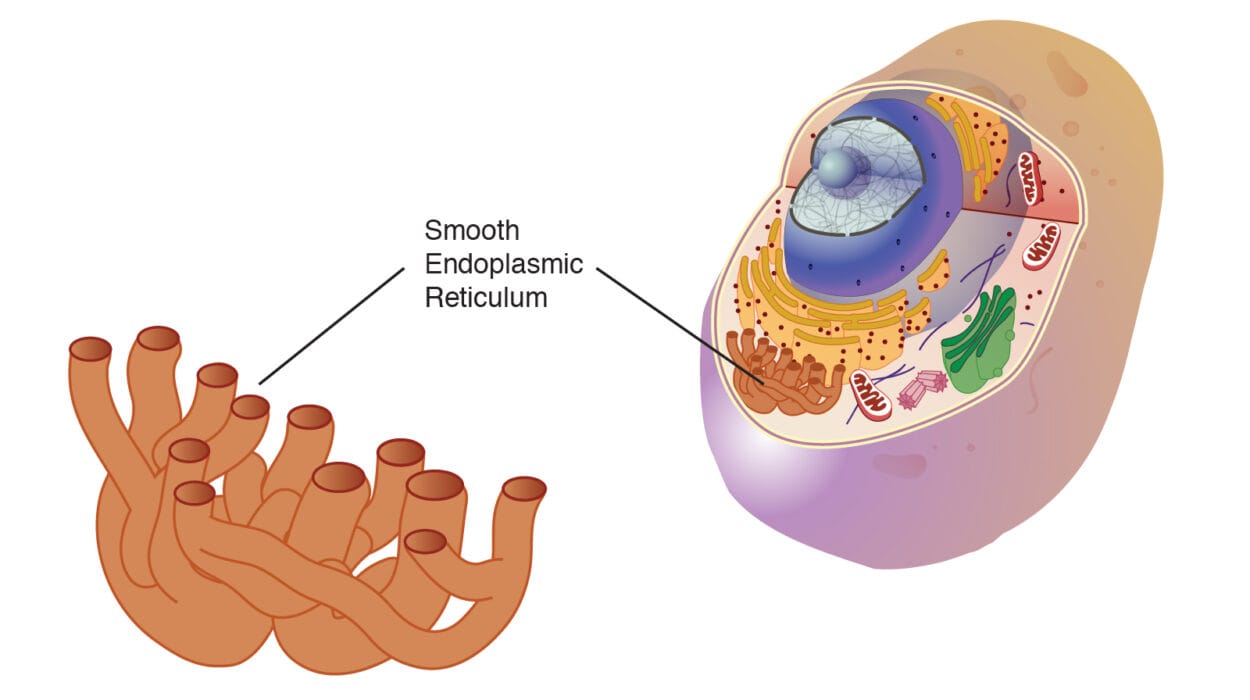Psychology is one of the most fascinating fields of science, offering deep insights into how humans think, feel, and behave. However, because it deals with the mind—something everyone has personal experience with—misconceptions often arise. Over the years, pop culture, movies, and even outdated textbooks have spread many psychological myths that persist despite scientific evidence proving them wrong. These myths can distort our understanding of human nature, intelligence, learning, emotions, and even mental health.
In this in-depth article, we’ll explore ten of the most common psychology myths you probably believe, along with the scientific evidence that debunks them. Understanding the truth behind these myths not only improves our psychological literacy but also helps us think more critically about how we interpret behavior—our own and others’.
1. We Only Use 10% of Our Brain
One of the most popular myths in psychology is that humans use only 10% of their brains. This idea has been repeated in movies, motivational speeches, and even classrooms. It suggests that most of our brain remains untapped and that if we could somehow access the rest, we’d unlock extraordinary mental powers.
However, neuroscience has completely debunked this claim. Brain imaging technologies like fMRI (functional magnetic resonance imaging) and PET (positron emission tomography) scans show that virtually every part of the brain is active at some point throughout the day, even during rest or sleep.
The brain is an extremely energy-demanding organ—it accounts for about 2% of body weight but uses roughly 20% of the body’s energy. If we only used 10% of it, evolution would have never shaped such a metabolically expensive structure. Even small brain injuries can have dramatic consequences for cognition or movement, demonstrating that every region serves a purpose.
The myth likely originated in the early 20th century, possibly as a misinterpretation of statements by psychologists like William James, who said humans “use only a small part of their mental potential.” He meant this metaphorically, referring to human creativity and motivation—not to actual brain capacity.
Scientific research now confirms that while not all neurons fire simultaneously, different brain regions are responsible for different functions such as perception, memory, language, and emotion. In short, you use all of your brain—just not all at once.
2. People Are Either “Left-Brained” or “Right-Brained”
You’ve probably heard people describe themselves as “left-brained” (logical and analytical) or “right-brained” (creative and intuitive). This idea stems from the fact that the brain’s two hemispheres do specialize in different types of processing: the left hemisphere is generally associated with language and detail-oriented thinking, while the right is more involved in spatial awareness and holistic processing.
However, the myth exaggerates this specialization into personality types, which is not supported by neuroscience. Studies using brain imaging show that while certain tasks may rely more heavily on one hemisphere, both sides of the brain constantly communicate through the corpus callosum, a dense bundle of nerve fibers connecting them.
No one is purely left- or right-brained. Creativity, for instance, involves both hemispheres—the right for generating novel ideas and the left for organizing them logically. Similarly, language relies on both sides: while syntax and grammar often involve the left hemisphere, emotional tone and metaphor rely on the right.
The “brain dominance” myth became popular in the 1970s after the split-brain research of Roger Sperry, who studied patients with severed corpus callosums. However, Sperry’s findings were misinterpreted in the public sphere, leading to the oversimplified idea of brain “types.”
In reality, every thought, emotion, and action arises from the coordinated work of both hemispheres. The most intelligent and creative processes emerge from whole-brain integration, not from dominance of one side over the other.
3. Memory Works Like a Video Recorder
Many people believe that memory functions like a camera or video recorder, perfectly capturing and storing every detail of our experiences for later playback. This belief feels intuitive, but it’s far from accurate.
Psychological research shows that human memory is reconstructive, not reproductive. This means that every time we recall a memory, we actively rebuild it from fragments stored across the brain—often filling in gaps with guesses, assumptions, or new information acquired after the event.
Elizabeth Loftus, a pioneering cognitive psychologist, demonstrated how easily memories can be altered. Her studies on eyewitness testimony revealed that simply changing the wording of a question (“How fast were the cars going when they smashed into each other?” vs. “when they hit each other?”) could alter participants’ recollections of an event.
False memories are surprisingly easy to create. People can be led to “remember” events that never happened—such as being lost in a mall as a child—through repeated suggestion. Memory is therefore less like a video recording and more like a story that gets rewritten each time we tell it.
This has profound implications for law, therapy, and education. It reminds us that confidence in memory does not equal accuracy and that our recollections are subject to bias, emotion, and distortion.
4. Opposites Attract
The phrase “opposites attract” is one of the most enduring beliefs in popular psychology, especially when it comes to romantic relationships. It suggests that people with contrasting personalities are naturally drawn to each other and that these differences create balance and excitement.
While this idea makes for compelling stories, scientific evidence tells a different story. Decades of research in social psychology and relationship science show that similarity, not difference, is what predicts long-term compatibility.
Studies consistently find that couples who share similar values, beliefs, education levels, interests, and communication styles tend to have more stable and satisfying relationships. This is known as the similarity-attraction effect. Similarity promotes understanding, reduces conflict, and reinforces mutual validation.
Opposites can certainly attract initially, often due to novelty or curiosity, but these relationships may struggle over time as differences in core values or lifestyle preferences create friction. That doesn’t mean all opposites are doomed—mutual respect, communication, and emotional intelligence can bridge many divides—but the romanticized notion that opposites naturally complement each other lacks scientific support.
In short, while differences can add spice to a relationship, shared foundations are the true glue that holds partners together.
5. Playing Classical Music to Babies Makes Them Smarter
The so-called “Mozart effect” became famous in the 1990s, suggesting that listening to classical music—especially Mozart—can boost a baby’s intelligence. This led to a booming market for baby music CDs and toys claiming to enhance cognitive development.
The truth, however, is much more nuanced. The original 1993 study by Rauscher, Shaw, and Ky found that college students who listened to Mozart briefly performed slightly better on a spatial reasoning task. But the effect was short-lived, lasting only about 10–15 minutes, and had nothing to do with overall intelligence.
Subsequent research has repeatedly failed to replicate any long-term IQ benefits from listening to classical music. Instead, scientists have found that any short-term boost in performance likely comes from increased arousal and mood—the music simply makes people more alert or motivated for a brief period.
That said, exposure to music in childhood can still have real benefits. Learning to play an instrument, for example, can enhance motor skills, attention, and auditory processing. Music can also promote emotional well-being and creativity. But passively listening to Mozart won’t make anyone smarter—it’s active engagement, not passive exposure, that counts.
6. Mental Illness Is a Sign of Weakness
One of the most damaging psychological myths is the belief that mental illness reflects personal weakness or moral failure. This stigma discourages countless people from seeking help and perpetuates discrimination against those struggling with mental health conditions.
Modern psychology and neuroscience have shown that mental illnesses such as depression, anxiety, bipolar disorder, and schizophrenia are medical conditions, not character flaws. They arise from complex interactions among genetics, brain chemistry, trauma, and environmental stressors.
For example, major depressive disorder is associated with changes in neurotransmitter systems like serotonin and dopamine, as well as altered activity in brain regions such as the prefrontal cortex and amygdala. Similarly, anxiety disorders involve overactivation of the brain’s threat-detection systems.
Just as no one chooses to develop diabetes or asthma, no one chooses to have depression or PTSD. These are health issues that require understanding, treatment, and support—not judgment.
Psychological therapy, medication, social support, and lifestyle changes can all play a role in recovery. The myth that mental illness equals weakness is not only false but harmful, as it prevents individuals from getting the help they need. Mental health is an essential part of overall health, and seeking help is a sign of strength, not frailty.
7. Lie Detectors Can Accurately Detect Lies
Polygraph tests—often called “lie detectors”—are popular in movies and crime shows, where they seem to reveal the truth with scientific precision. In reality, polygraphs measure physiological responses like heart rate, blood pressure, respiration, and skin conductivity, based on the assumption that lying triggers specific stress responses.
However, scientific research has repeatedly shown that polygraphs are unreliable as lie detectors. While physiological arousal can accompany deception, it can also be caused by anxiety, fear, or embarrassment. Some people show no physiological reaction when lying, while others react strongly when telling the truth.
The American Psychological Association and the National Academy of Sciences have both concluded that polygraphs cannot consistently distinguish between truth and deception. Skilled liars can manipulate their physiological responses, and innocent people may “fail” simply because they are nervous.
Although polygraph results are sometimes used as investigative tools, they are generally inadmissible as evidence in court because of their unreliability. Advances in neuroscience and behavioral science are exploring new methods of deception detection, but as of now, there is no scientifically validated technology that can read minds or detect lies with certainty.
8. Memory Repression Is Common in Trauma
Popular media often portrays people repressing traumatic memories—pushing them into the unconscious mind, only to recover them years later in therapy. This idea stems from early psychoanalytic theory, particularly Sigmund Freud’s work, which proposed that the mind protects itself by blocking painful experiences from conscious awareness.
However, decades of research in cognitive and clinical psychology show that true repression is extremely rare, if it exists at all. In fact, most trauma survivors remember their experiences all too vividly, often suffering from intrusive thoughts and flashbacks, as seen in post-traumatic stress disorder (PTSD).
Memory can be forgotten or distorted over time, especially for childhood events, but this is not the same as active repression. Furthermore, studies have shown that memory “recovery” techniques can sometimes lead to false memories—believable but inaccurate recollections created through suggestion or imagination.
This does not mean all recovered memories are false; rather, therapists and clients must approach them carefully and scientifically. Trauma affects memory in complex ways, sometimes fragmenting or altering details, but the notion that the mind routinely buries traumatic memories deep in the unconscious is unsupported by modern evidence.
9. Intelligence Is Fixed and Determined by Genetics
Many people believe that intelligence is an inborn, unchangeable trait—that you’re either “smart” or you’re not. While genetics do play a role in cognitive ability, this belief ignores the powerful influence of environment, education, and mindset.
Twin and adoption studies estimate that about 40–60% of intelligence can be attributed to genetics, but this means that environmental factors account for the rest. Nutrition, early childhood experiences, education quality, motivation, and even sleep can significantly influence cognitive development.
Moreover, modern neuroscience reveals that the brain is highly plastic, capable of forming new neural connections throughout life. This neuroplasticity means that intelligence is not fixed—it can be developed through learning, challenge, and practice.
Psychologist Carol Dweck’s research on “growth mindset” further shows that believing intelligence can grow leads to greater achievement. Students who see failure as an opportunity to improve, rather than proof of inadequacy, perform better academically and are more resilient.
In short, intelligence is both inherited and developed. Genes may set certain potentials, but environment and effort shape how far we reach them.
10. Happiness Is the Absence of Negative Emotions
Many people assume that happiness means never feeling sad, anxious, or angry. This belief can lead to unrealistic expectations and emotional suppression, which paradoxically make us less happy over time.
Positive psychology, however, teaches that happiness is not the absence of negative emotions but the ability to manage and coexist with them. Emotional well-being involves accepting the full range of human feelings, both pleasant and unpleasant.
Research by psychologists such as Barbara Fredrickson and Martin Seligman shows that authentic happiness stems from meaning, relationships, and engagement—not just pleasure. People who accept their negative emotions without judgment are more resilient and experience greater long-term satisfaction.
Chronic suppression of emotions can actually increase stress and contribute to mental health issues. Learning emotional regulation—acknowledging and understanding our feelings rather than denying them—is key to genuine psychological health.
True happiness is not about constant positivity; it’s about balance, purpose, and the ability to find peace even when life is imperfect.
Conclusion
Psychology is a science that constantly evolves as new discoveries challenge old assumptions. The myths explored here—though widespread—are reminders that intuition and pop culture often misrepresent scientific truth.
We use all of our brain, our memory is reconstructive, intelligence can grow, and mental illness is not weakness. Relationships thrive on similarity more than opposition, and happiness involves embracing all emotions, not erasing the negative ones.
By understanding the science behind these myths, we can think more critically about human behavior and better appreciate the complexity of the mind. Dispelling these misconceptions not only enriches our knowledge but also encourages empathy, curiosity, and a deeper respect for the psychological forces that shape who we are.






